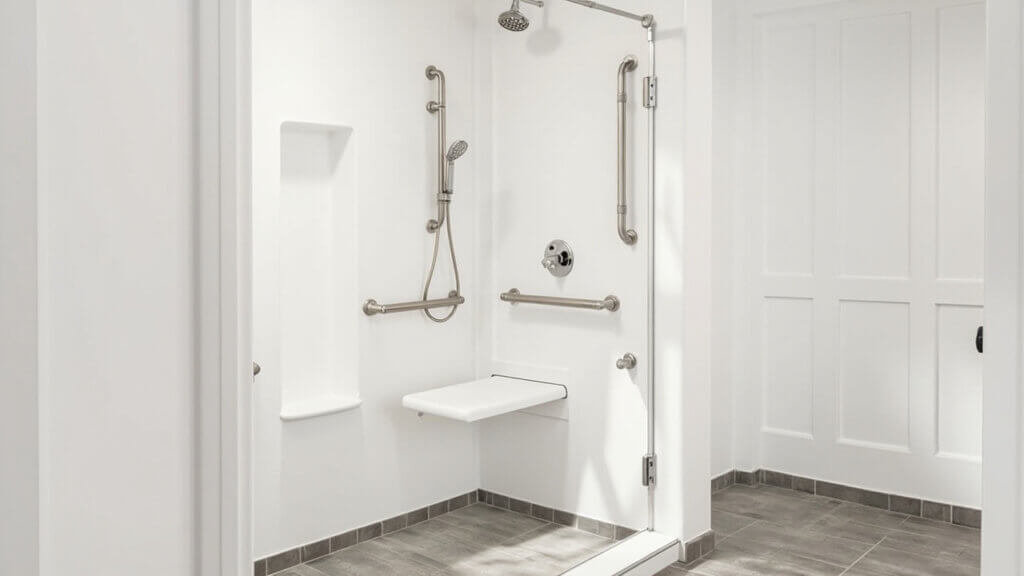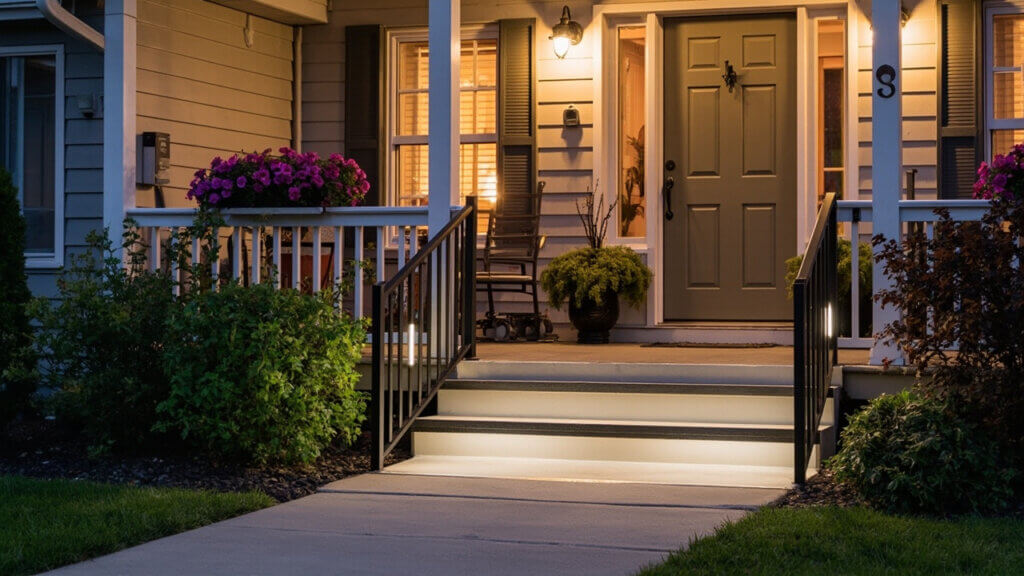Aging doesn’t mean giving up your independence—in fact, more adults over 50 are choosing to age in place than ever before. But to do it safely and confidently, your home may need a few smart updates.
This 2025 home safety checklist is designed to help you or a loved one create a safer, more comfortable living space that supports independent living well into the future.
Whether you’re planning ahead or already navigating mobility or vision changes, these expert-backed tips make your home not just safer—but smarter and more livable.
What Does “Aging in Place” Really Mean?
Aging in place means staying in your own home safely, independently, and comfortably—regardless of age or ability level. It requires a mix of thoughtful design, practical updates, and sometimes technology to reduce risks and increase convenience.
According to AARP, over 75% of adults 50+ say they want to age in place. And with the right setup—it’s absolutely possible.

2025 Aging in Place Home Safety Checklist
Use this room-by-room checklist to assess your current space and find areas to improve.
✅ General Safety Throughout the Home
- Remove throw rugs or secure them with non-slip pads
- Install grab bars in key areas (entryways, bathrooms)
- Use motion-sensor nightlights in hallways and bedrooms
- Ensure smoke and carbon monoxide detectors are up to date
- Keep pathways clear of clutter and wires
- Add lever-style door handles (easier than knobs)
- Install smart speakers or medical alert systems for hands-free help
Pro tip: Smart home devices in 2025, like fall-detection sensors and voice-controlled lighting, make aging in place even safer.
✅ Bathroom: The #1 Room for Falls
- Add non-slip mats inside and outside the tub/shower
- Install grab bars near the toilet and shower
- Consider a walk-in shower with a hand-held sprayer
- Use a raised toilet seat with arm supports
- Add temperature-regulated faucets to prevent burns

✅ Kitchen: Safety + Accessibility
- Store frequently used items between waist and eye level
- Use pull-out shelves or lazy Susans to reduce bending
- Install anti-scald devices on the sink
- Replace round knobs with easy-to-grip handles
- Add induction stovetops to reduce burn risk (only heat when cookware is present)
Bonus: Consider adding a smart fridge or voice-controlled microwave for convenience.
✅ Bedroom: Comfort & Emergency Access
- Ensure there’s a clear path to the bathroom
- Place a phone or emergency call button near the bed
- Use bed frames at safe height (not too low or high)
- Add adjustable lighting or smart lamps you can control by voice
- Keep slippers with non-skid soles by the bed
✅ Living Room: Daily Functionality
- Anchor furniture to prevent tipping
- Choose chairs with firm cushions and arms for easy standing
- Replace low coffee tables with rounded-corner furniture
- Keep remotes, glasses, and chargers in easy reach
- Install smart plugs or voice-activated outlets to minimize bending
✅ Entryway and Exterior
- Add a sturdy handrail on both sides of stairs
- Ensure walkways are well-lit and free of cracks
- Install motion-activated lights at the front and back door
- Consider a ramp or stair lift if needed
- Use a video doorbell for added security and remote access

Smart Tech Upgrades for Aging in Place (2025 Picks)
- Voice assistants (Amazon Echo, Google Nest) for reminders, calls, and controlling devices
- Smart thermostats for temperature comfort without fiddling with knobs
- Medical alert smartwatches for fall detection and emergency calls
- Video doorbells for added security and convenience
- Remote monitoring systems for loved ones or caregivers to check in without invading privacy
Many 2025 Medicare Advantage plans now cover some home safety upgrades—check with your provider.
FAQs About Aging in Place at Home
What’s the biggest risk for seniors living alone?
Falls are the #1 cause of injury among older adults. Most happen at home—especially in the bathroom or during nighttime trips.
Do I need to hire a contractor for home updates?
Not always. Many upgrades (like grab bars, smart lighting, or raised toilet seats) can be installed DIY or by a handyman.
Can technology really help me live at home longer?
Yes. Smart home tools in 2025 are more user-friendly than ever—and they provide peace of mind, especially for people aging solo or with long-distance family.
Final Thoughts: Your Home, Your Independence
Aging in place is about living life on your terms—in comfort, safety, and dignity. By taking small steps now, you can prevent big problems later and feel more confident at home for years to come.
Start with one room this week. Make one small upgrade. You don’t need a full remodel—just the right improvements at the right time.
Which room will you make safer first?
